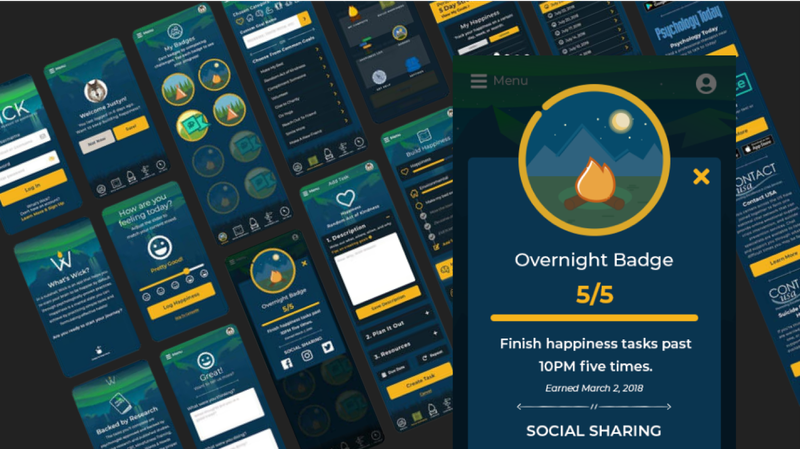
Feb 01 2020
Wick: Entertaining Well-being Science Education
I performed roles of product designer, user researcher, UX/UI designer, and developer.
Wick is a mobile app designed to make the journey of improving well-being a comforting and enjoyable adventure.
- Achieved a 100% user approval rating
- Identified and capitalized on a niche with little to no competition
Challenges
Learning and applying the science of well-being is often a time-consuming and confusing process. Users must absorb complex subject matter and track multiple goals, which can feel overwhelming and discouraging. Existing solutions lacked engaging methods to teach well-being science while motivating users to take actionable steps.
My Approach
To address these challenges, we conducted a comprehensive SWOT analysis of 25 competing apps in the health and wellness space. This analysis highlighted gaps in gamification and the repetitive interactions that users found disengaging.
To better understand our audience, we conducted phone interviews, collecting both quantitative and qualitative data, such as current app usage, likes and dislikes, and interest in our mission. Using these insights, we created user personas representing adults aged 19–40 at various stages of their well-being journeys.
We also conducted card sorting and ideation sessions to determine the app’s core features and user flows.
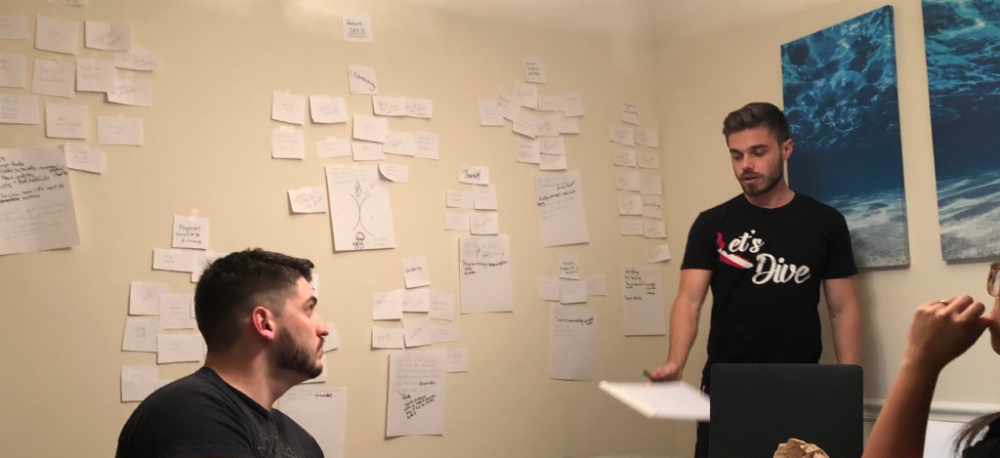
Mood-boarding exercises established the app's visual tone, while whiteboarding sessions helped us design workflows and wireframes that catered to all personas. These efforts guided branding decisions, ensuring Wick would feel like a supportive companion on the well-being journey, incorporating nature-inspired aesthetics and a comforting fire motif into its logo and design system.
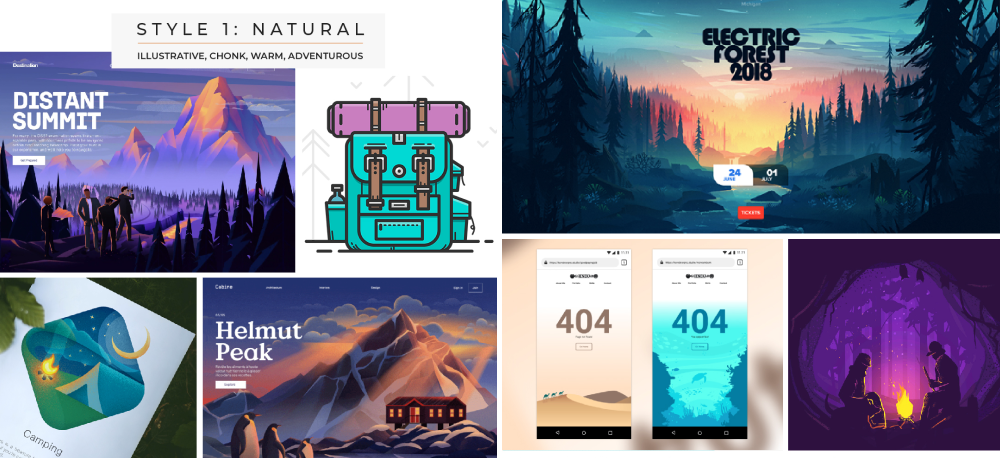
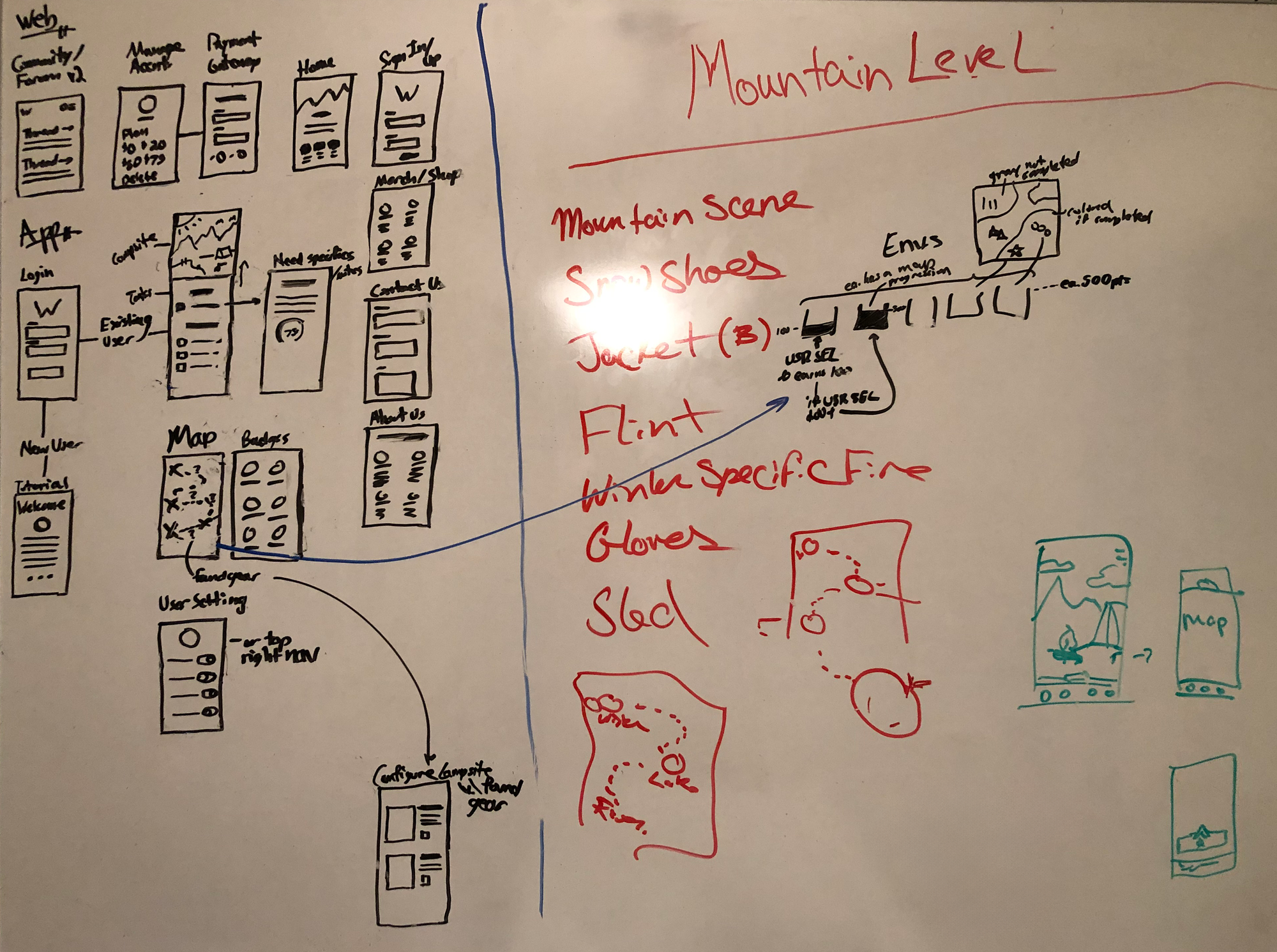
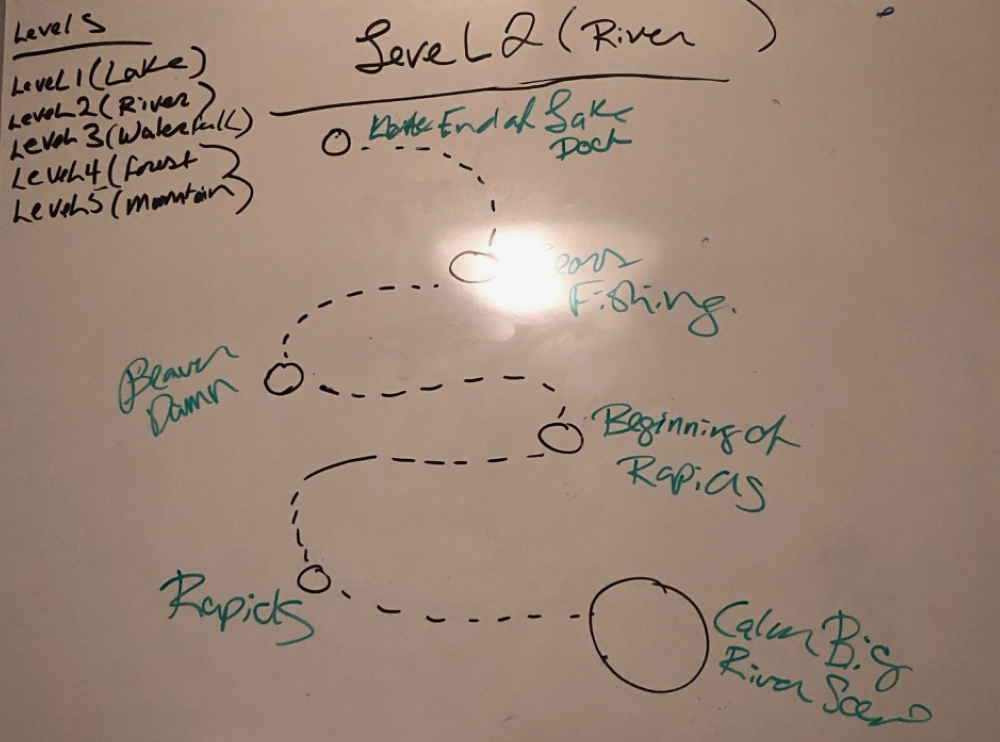
Solutions
Our design process started with wireframes based on whiteboard designs, followed by the development of a lo-fi prototype to test the app's core features.
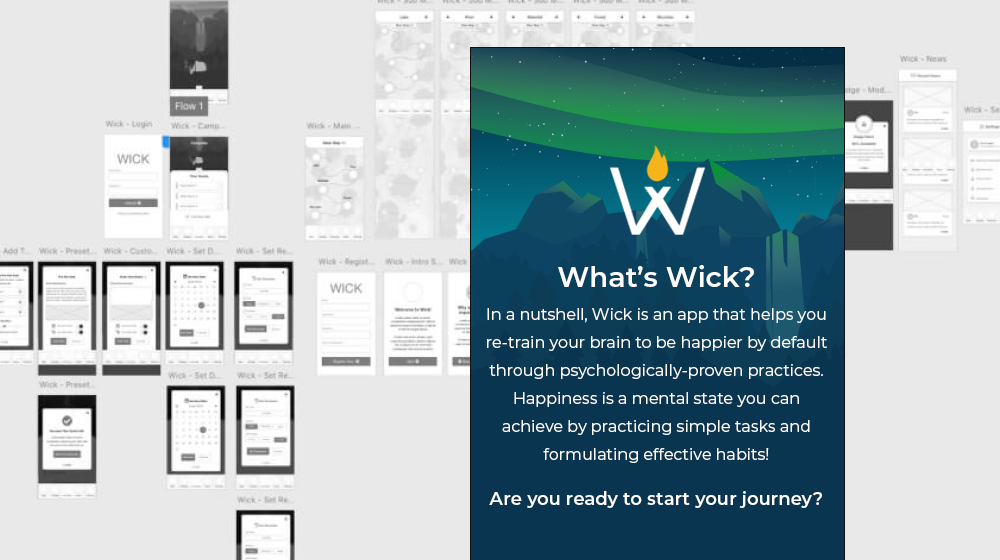
User feedback revealed valuable insights, including pain points and opportunities for improvement, which were addressed in the hi-fi prototype. The hi-fi design incorporated all user states identified during testing and brought the app’s visual language to life. The app’s journey-based format, combined with gamified tasks, resonated strongly with users during testing.
Wick's gamified structure rewarded users for completing tasks, with rewards weighted based on task difficulty to encourage progression. Points, badges, and other elements fostered a sense of achievement while breaking down complex well-being science into manageable steps. The app’s empathetic tone and adventure-inspired visual language created a welcoming and motivating user experience.
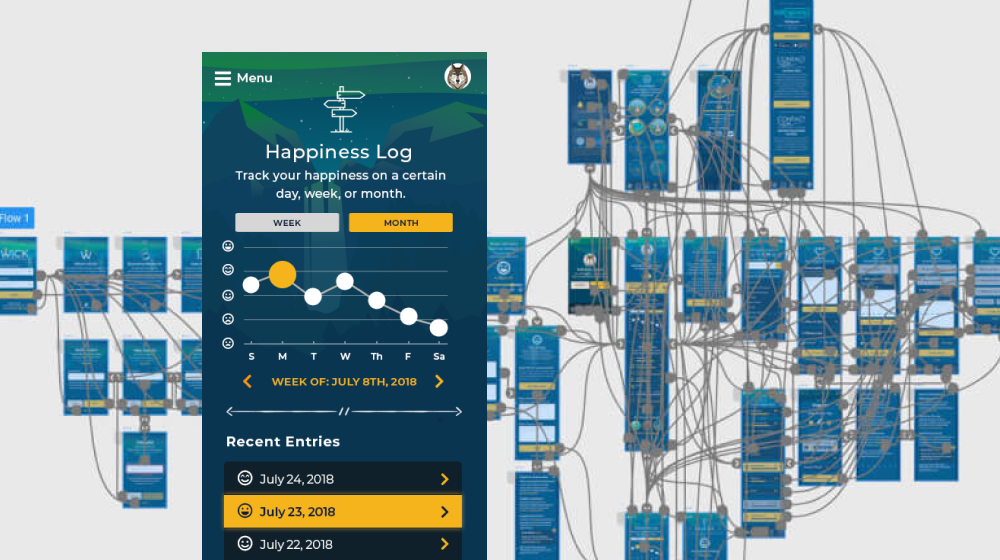
Key Takeaways
Wick successfully transformed the complex science of well-being into a digestible, gamified experience that users loved. By combining user-centric design with gamification and empathetic communication, the app stands out in the crowded wellness space. With a 100% approval rating, Wick proved to be an engaging, supportive tool for improving well-being, setting a high standard for innovative, user-centered solutions in the industry.